Before you enter your fantasy baseball drafts this season, you need prospect rankings for the top youngsters poised to make an impact in 2019.
Below are my rankings of the best minor leaguers expected to reach the majors and provide fantasy value this season. That's where this list differs from other prospect lists, as this is a reflection of this season's fantasy potential and not overall prospect skill.
With spring officially here, we need a temperature check on the top 50 prospects for 2019. Below, I have updated the status of the top 10 players from my preseason rankings along with some information on players who have had a status change -- good or bad -- that warrants mentioning.
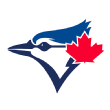 1. Vladimir Guerrero Jr., 3B, Toronto Blue Jays
1. Vladimir Guerrero Jr., 3B, Toronto Blue Jays
Guerrero shouldn't even be eligible for prospect lists because he was big-league-ready around Memorial Day of last year. The Blue Jays took advantage of a midsummer knee injury to delay his arrival, but they will not be able to do so for much longer. He'll probably spend the first two weeks in Buffalo to suppress his service time before making the short trip across the border. After a tremendous season in which he hit .381/.437/.636 in 95 games, he continued to rake in the Arizona Fall League. In 19 more games, he hit .351/.409/.422. The hit tool is 80 (the highest grade on the 20-80 scouting scale). So is the power. He also has 80 discipline if that were a thing. He remains No. 1 until he isn't eligible.
Update: Vlad Jr. has been sidelined with an oblique injury for most of the spring. The ailment gives the Blue Jays an easy excuse to start him in the minors.
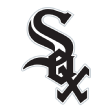 2. Eloy Jimenez, OF, Chicago White Sox
2. Eloy Jimenez, OF, Chicago White Sox
It will be a race between Guerrero and Jimenez to see who makes it to the majors first. I think it will be Jimenez, who despite filing a grievance against the team for not calling him up last season, has an outside chance to make the Opening Day roster. You can understand his frustration at being passed up after he hit .337/.384/.577 in 108 combined games between Double-A and Triple-A. Jimenez has tremendous power, with the potential to hit 40 homers in a season at some point. He also has pretty good contact skills for a big, strong dude. He is a decent outfielder, but there is little value to gain from position or flexibility.
Update: Jimenez was ticketed to open the season in Charlotte to work on defense or something until he signed a six-year, $43 million deal. Once the ink dried, he magically became ready for the show. He is going to hit at least 30 home runs this year.
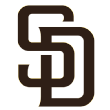 3. Fernando Tatis Jr., SS, San Diego Padres
3. Fernando Tatis Jr., SS, San Diego Padres
Tatis is certainly in the running for top overall prospect -- he was Keith Law's No. 1 prospect -- but he lands here because he will likely spend most, if not all, of 2019 in the minors. Still, the 19-year-old is close enough that you need to pay attention now. After another slow start, Tatis caught fire last summer. He smashed 42 extra-base hits in 88 games before needing thumb surgery that ended his season prematurely. He is a plus defender at shortstop, although he might outgrow the position and need to move to third at some point. He'd be a plus defender there as well. He has big-time power and speed at a premium position.
Update: Tatis has had a tremendous spring, but the signing of Manny Machado completed the left side of the infield for now. At some point Tatis will join him there, with Luis Urias shifting across the bag.
 4. Nick Senzel, IF/OF, Cincinnati Reds
4. Nick Senzel, IF/OF, Cincinnati Reds
Senzel would have been well on his way to Cincinnati if not for a finger injury that required season-ending surgery. The No. 2 overall pick in 2016 was off to a slow start before rallying to a .310/.378/.509 line prior to his injury. He has a 70 hit tool and was showing increased power, collecting 20 extra-base hits in fewer than 200 plate appearances. Senzel is going to hit. A .300 average with at least mid-teens home runs and a dozen or so steals seems like a realistic goal. His ultimate value will be tied to position -- or positions. He made 182 appearances at third base over his first two seasons as a pro. But with Eugenio Suarez at the hot corner, he made 28 starts at second base and one at short in 2018. If the Reds keep Scooter Gennett at the keystone and Jose Peraza at short, Senzel might need to play a utility role or even spend some time in center field before a permanent spot opens.
Update: Senzel looks likely to make the Opening Day roster. The bat has been ready for some time. He is still without a true home on the diamond despite being a good defender at multiple positions. A superutility role seems likely for now, with the chance to take over center field with more reps.
 5. Francisco Mejia, C, San Diego Padres
5. Francisco Mejia, C, San Diego Padres
Acquired by the Padres in exchange for All-Star reliever Brad Hand and Adam Cimber, Mejia is the Padres' catcher of the future even with Austin Hedges around in the present. Mejia is a true switch-hitter with a plus bat, OK power and a dynamite arm that should keep him behind the plate -- especially with how San Diego handled him after the trade. With Yan Gomes, now with the Washington Nationals, at catcher, the Indians attempted to move Mejia around. He played third base and the outfield as the team looked for opportunities to play his bat. But with the Padres, all his defensive opportunities came as a backstop. The position makes his bat only more valuable. A spring trade of Hedges could open the door for him to take over as soon as Opening Day.
Update: Mejia has hit himself into at least a timeshare with the defensively minded Austin Hedges. At an extremely thin position, even a part-time Mejia is valuable, but his bat is so good, I think he'll overtake Hedges at some point.
 6. Forrest Whitley, SP, Houston Astros
6. Forrest Whitley, SP, Houston Astros
Whitley gets the pole position for pitchers. The 2018 season was mostly a lost one for the right-hander. He missed the first 50 games due to a drug suspension, returned in June, dominated and then missed time twice due to oblique and lat injuries. He struck out 34 batters in 26⅓ innings in the regular season. Whitley was sent to Arizona to work the fall league, where he was equally as good, striking out 36 batters in 26 innings. He works in the mid-90s with a pair of breaking balls and a solid changeup. Due to the missed development, the 21-year-old will start the season in the minors, where his workload can be manipulated. In lieu of a deadline trade, the Astros will likely consider Whitley the best midseason pickup they can make in 2019.
Update: Whitley was dominant in 12 innings this spring, striking out 15 and walking four. He will start in the minors but should be an impact arm to add this summer.
 7. Yusei Kikuchi, SP, Seattle Mariners
7. Yusei Kikuchi, SP, Seattle Mariners
While some choose to leave foreign free agents off prospect rankings, for the sake of this list, we want the impact players regardless of their origin. Kikuchi is 27 years old and comes to the States after a successful stint with the Seibu Lions of the NPB. He works in the low-to-mid-90s with a slider that will get outs and above-average control of his other off-speed pitches. The Mariners are in rebuilding mode, and Kikuchi's win total might suffer because of this. However, his home starts will come in a pitcher's park, and he will be able to do something most other pitchers on this list will not: start 30-plus games.
Update: Kikuchi was pretty good in his MLB debut in his native Japan. He should get 30 more starts this year and be a solid ERA and WHIP contributor.
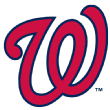 8. Victor Robles, OF, Washington Nationals
8. Victor Robles, OF, Washington Nationals
With Bryce Harper's 2018 home still to be determined, Robles has the inside track on an outfield spot in Washington. Robles made his MLB debut as a 20-year-old in 2017 and would have been in Juan Soto's spot in 2018 if not for an elbow injury that wiped out four months of his season. He began playing minor league games late in the summer and made it back to the majors in September. In limited action, he fared well, posting a .288 average with three home runs and three steals in 21 games. He has a plus stick and elite speed. If he produces average power or better, he'll be a superstar, with award-winning ability as a defender in center field. The Nationals might still lose Harper, but with Robles and Soto in the outfield along with Adam Eaton, they should be solid.
Update: Along with Juan Soto, Robles will lead the post-Bryce Harper era in the nation's capital. He should easily top 20-25 steals with a solid average as an everyday player.
 9. Justus Sheffield, SP, Seattle Mariners
9. Justus Sheffield, SP, Seattle Mariners
Acquired this offseason from the Yankees, Sheffield might end up replacing James Paxton, who was sent to New York in the same deal. The undersized lefty has a mid-90s heater that he pairs with a plus slider. His changeup has regressed to a third option and will need to improve in order to combat the platoon split. Sheffield has decent control, but his command leaves more to be desired. He could be a No. 2 starter or a late-inning reliever, with all the possible outcomes in between. That said, with the youth movement underway in Seattle, he will be afforded every opportunity to develop as a starter, in contrast to the baptism by fire in the heavily competitive Bronx.
Update: Sheffield really never received a chance at a roster spot this spring. I would expect a service time shell game before he comes up this summer and takes a turn in the rotation.
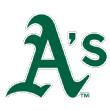 10. Jesus Luzardo, SP, Oakland Athletics
10. Jesus Luzardo, SP, Oakland Athletics
At some point last summer, I was told that Luzardo might be the best left-handed pitching prospect in baseball. He is for me, although I have him behind Sheffield here for opportunity reasons. I believe Sheffield has the chance to break camp with Seattle, whereas Luzardo, who jumped three levels in 2018, will likely start the season in Triple-A unless he forces his way into the rotation this spring. As packaged, he has three above-average pitches. He leads with a mid-90s fastball, a plus changeup to fend off right-handed hitters and a curveball that can be thrown for strikes or chases. Luzardo does all of this with a durable frame and control that is already bordering on command. Whitley has better stuff. Sheffield has the easier path. But Luzardo is my guy for the long haul.
Update: Luzardo looked very much like the best left-handed prospect in the upper minors this spring with 15 strikeouts in 9⅔ innings. Unfortunately, a rotator cuff injury will shut him down for four to six weeks. That means he probably won't pitch regularly until June and now might not make it to Oakland before September.
 11. Garrett Hampson, 2B, Colorado Rockies
11. Garrett Hampson, 2B, Colorado Rockies
With DJ LeMahieu in New York and Daniel Murphy slated to see the bulk of his playing time at first base, Hampson is penciled in as the Rockies' second baseman ... a position that puts him just outside the top 10. A third-round pick in 2016, he was fast-tracked to Colorado after a brief cameo in Double-A and a strong showing in Triple-A last summer. He has little power but can hit and run, which makes him a scoring threat in a talented lineup. He makes up for his lack of over-the-wall power with his ability to split the gaps and move quickly once aboard. He has solid discipline and could steal 40 bases if given the opportunity. If so, the job is his until ... you get a little bit further down the list.
Update: Hampson has held his own this spring, but not like former top-100 prospect Ryan McMahon, who looks like the Rockies' second baseman for now. Hampson should carve a role as a utilityman, but his value has taken a hit without primary gig.
 12. Christin Stewart, OF, Detroit Tigers
12. Christin Stewart, OF, Detroit Tigers
Stewart debuts in the top 25 as all signs point to his getting significant at-bats in 2019. He will probably play left field poorly and see some time at designated hitter, but neither of those will matter to fantasy managers if he hits 25 home runs and gets on base regularly. The Tigers have all the incentive in the world to give him that opportunity. He is left-handed, so he will probably share time with Mikie Mahtook or Dustin Peterson. That said, the strong side of a platoon is worth 400 to 500 plate appearances. A player like Stewart, while not as valuable in a traditional sense, allows you to short outfield in the draft while building depth at a shallower position.
 13. Kyle Tucker, OF, Houston Astros
13. Kyle Tucker, OF, Houston Astros
Things did not go as planned for Tucker at the major league level. Sandwiched around a pair of call-ups, Tucker had a tremendous minor league season, batting .332/.400/.590 with 24 home runs in 100 games. But with the Astros, he failed to hit his weight by about 50 points in limited action. Despite the results, the former No. 5 overall pick has immense upside and reached the majors at age 21. The strength is evident, and he still projects to hit for average and get on base at an above-average clip. He'll also be a good defender in a corner outfield position, which will keep his bat in play even if he struggles again.
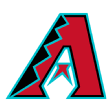 14. Merrill Kelly, SP, Arizona Diamondbacks
14. Merrill Kelly, SP, Arizona Diamondbacks
A former farmhand of the Tampa Bay Rays, Kelly spent the past four years throwing baseballs in South Korea. He pitched well enough to return home with a seven-figure guarantee despite, at age 29, never having pitched in the major leagues. He throws in the low 90s now with the ability to go a tick higher, a decent changeup and a curveball developed overseas. The profile is that of a back-end starter, but he has the opportunity to start right away and a salary that will grant him time to give the club a return on their modest investment.
 15. Alex Reyes, P, St. Louis Cardinals
15. Alex Reyes, P, St. Louis Cardinals
Reyes should not be on this list, not because of his talent but because he should be an established major league ace at this point. Reyes missed all of 2017 after undergoing Tommy John surgery. He made it back to St. Louis in June of last year only to tear a lat muscle in his first start, which wiped out the rest of his season. The tools are still there. He can hit triple digits, with a plus curveball and a changeup that is beyond useful. His control was an issue two years ago, but we don't know now. He has thrown 27 innings in two years. The Cardinals will be cautious, but they should also get the maximum of the innings they allow him to throw in 2019.
Update: Reyes will break camp as a member of the Cardinals' bullpen. Health and workload are the primary concerns as always. If he returns to the rotation at any point, he can be a real difference maker.
 16. Danny Jansen, C, Toronto Blue Jays
16. Danny Jansen, C, Toronto Blue Jays
Jansen has been a fast-rising star. He started 2017 playing for high-A Dunedin and finished that season in Triple-A. He returned to Buffalo to start 2018 and made the short drive over to Toronto, where he finished the season in a timeshare at the catcher position. A 16th-round pick in 2013, Jansen has made tremendous strides as a player. After being slowed by some broken bones early on, he has showed excellent contact ability, with a firm grasp of the strike zone. The right-handed hitter has added some pull-side power. He topped double-digit home runs for the first time in 2017 and set a career high with 15 between the two levels last year. With Russell Martin no longer around, Jansen should open the season as the Jays' primary catcher. There were 15 catchers to make 400 plate appearances in 2018. Three of them carried a batting average of .270 or higher. Even if Jansen just hits .270 with 12 home runs and a solid on-base percentage, he will be among the top performers at the position, and he'll do so without the price tag of J.T. Realmuto or the other top-shelf backstops.
 17. Luis Urias, 2B/SS, San Diego Padres
17. Luis Urias, 2B/SS, San Diego Padres
One day Urias will pair with Tatis to give the Padres one of the better middle infields in the game. Unlike his future teammate, Urias has reached the top level and projects to start there in 2019. His value is almost solely tied to his plus hit tool that has carried him through the minors. Outside of his time with El Paso in the hitter-friendly Pacific Coast League, he has shown below-average pop, which doesn't bode well for power production in San Diego. But every team needs a leadoff hitter, and Urias' contact skills make him an option there. The 21-year-old has experience at short and third. He should start the year on the left side of the infield in 2019, but with Tatis coming at some point and Wil Myers trying yet another position, Urias will likely settle at the keystone. As a top-of-the-order hitter, he will get ample opportunity to hit, which is what he does best.
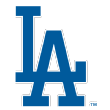 18. Alex Verdugo, OF, Los Angeles Dodgers
18. Alex Verdugo, OF, Los Angeles Dodgers
The Dodgers traded Yasiel Puig and Matt Kemp, temporarily relaxing the logjam in the outfield. Then they signed A.J. Pollock to a five-year contract and handed him the keys to center field. So once again, in the right organization, Verdugo would have cracked the top 10, but he once again finds himself on the outside looking in. He is as close to major-league-ready as any prospect on this list and has already had some success at that level. Verdugo is a skilled batsman with good discipline and average (or slightly better) power. He does not have great foot speed but is still playable in center field, with the arm to cover right. He offers a good average, good on-base percentage and 40 extra-base hits. He just needs the chance to get those numbers.
Update: With nothing left to prove in Oklahoma City, Verdugo is likely to make the Opening Day roster. He will still battle Joc Pederson for playing time but has the better overall skill set, even though Pederson is the more dynamic power hitter.
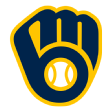 19. Keston Hiura, 2B, Milwaukee Brewers
19. Keston Hiura, 2B, Milwaukee Brewers
I list Hiura at second base because it's the position he played last season and will be the position he plays if he remains with the Brewers. But his true home is at the plate with a bat in his hands. The ninth overall pick in 2017, he is one of the best pure hitters in his class. The fact that he went in the top 10 despite a limited defensive profile and fears of a future Tommy John surgery is a testament to his bat skills. Hitting across two levels, he compiled a .293/.357/.464 line with over 50 extra-base hits. Most of that damage was prior to a midseason promotion to Double-A, but he was also impressive during the Arizona Fall League, batting .323 with five home runs and six doubles in 23 games. The production earned him MVP honors for the short season. The Brewers did not tender a contract to Jonathan Schoop this winter. Instead, they are looking at a short-term platoon at second. Hiura will get his chance soon. He will likely spend some time in Triple-A, but his college experience and pedigree should lend to a quick promotion if he gets off to a good start.
 20. Richie Martin, SS, Baltimore Orioles
20. Richie Martin, SS, Baltimore Orioles
The Oakland Athletics left their 2015 first-round pick unprotected from the Rule 5 draft, leaving him available for the Orioles to scoop up. Martin struggled as a professional until 2018, when he repeated Double-A and hit .300 with an .807 OPS while collecting 43 extra-base hits and 25 steals. The Orioles are desperate for talent, and even though he's raw at the plate, the former Florida Gator enters camp as the favorite at shortstop -- a position he is suited to handle defensively. Even with modest success at the plate, the potential for 600 plate appearances and 20-plus steals as a middle infielder makes him worth a top-20 spot here.
Update: The good news is that the Orioles released veteran Alcides Escobar, which means Martin should easily make the Opening Day roster. The bad news is that fellow Rule 5 pick Drew Jackson will likely also make the roster and has outhit Martin by a decent margin this spring. Martin is the better defender at shortstop, so the job still looks like his to lose.
 21. Josh James, SP, Houston Astros
21. Josh James, SP, Houston Astros
James is one of the fastest-rising prospects in the game. He trimmed down quite a bit while picking up velocity and adding effectiveness on his secondary offerings. His slider is a plus pitch that plays off his potentially triple-digit fastball. His changeup is a good enough third pitch that he now has a legit chance to remain a starter for the duration of his career. He throws enough strikes - though he's not quite a marksman -- and still has enough mass to withstand a full workload. And James will do it for a team that could easily win 100 games. Not bad for the 1,006th pick in 2014.
Update: A right quad strain early in camp derailed James' quest for a rotation spot. He has a chance to make the roster as a reliever for now with an eye on Brad Peacock's job.
 22. Mitch Keller, SP, Pittsburgh Pirates
22. Mitch Keller, SP, Pittsburgh Pirates
Keller was very good at Double-A last season but saw his ERA jump two full runs after a promotion to Indianapolis. The good news is that he might have pitched better than the results would indicate. His strikeout rate jumped about 2 percent, with a relatively static walk rate and fewer home runs per nine innings. Armed with a plus fastball and an even better curveball, he can get his right-handed counterparts out as equipped. That said, without a big jump on the changeup, lefties still get on base more than you'd like to see. The top two pitches are enough to get outs on most days, and he has a good feel for the craft. If the offspeed improves, he could anchor a rotation. He'll have more time to work on it to start the year, with the chance to show what he's got midseason.
 23. Brent Honeywell, SP, Tampa Bay Rays
23. Brent Honeywell, SP, Tampa Bay Rays
Once my top pitching prospect in this space, Honeywell missed all of 2018 after undergoing Tommy John surgery. The knife is never good news, but Honeywell had his early enough (February) that it's realistic that we see him sometime during the summer. Prior to injury, he was a five-pitch hurler with all five offerings having above-average or better potential. He also had plus control bordering on command. We'll see how quickly it takes to come back, but I would bet on Honeywell being as good -- if not better -- quickly.
 24. Peter Alonso, 1B, New York Mets
24. Peter Alonso, 1B, New York Mets
Alonso has big-time power. He smashed 36 home runs in 574 plate appearances during the minor league regular season and then went to Arizona during the fall and belted six more in 27 games. As a team, the Mets finished 26th in slugging. They could use the power, especially at a position where they started Wilmer Flores more than half the time. Todd Frazier seems settled in at the position for now but shouldn't be blocking anyone with significant talent. That said, J.D. Davis and Dominic Smith are also in the mix, which pushes Alonso down the list a bit. He does have some swing-and-miss to his game, but not at the Joey Gallo level. He will also take his walks. The free passes should be a sustainable source of on-base opportunities as pitchers will be cautious around his right-handed bat. He runs and fields like a first baseman, which should not be a concern to fantasy managers ... provided he mashes 30-plus home runs.
Update: Alonso has likely hit himself onto the roster. He has 35-plus home run ability. Smith has had a strong spring too, but even though Smith is left-handed, Alonso's power could put him in position to see more at-bats in a first base platoon.
 25. Brendan Rodgers, 2B/SS, Colorado Rockies
25. Brendan Rodgers, 2B/SS, Colorado Rockies
Drafted third overall in 2015 as the Rockies' shortstop of the future, Rodgers will likely be the team's second baseman because Trevor Story is the shortstop of the present. Even with DJ LeMahieu walking, the emergence of Garrett Hampson has second covered for now. Defensively, Rodgers is probably better suited for work on the right side of the bag as he isn't the rangiest of players. The upside is on offense, where he has a good bat and more than enough power for a middle infielder. The plate discipline leaves more to be desired, but his naturally ability, the atmosphere at Coors Field and a talented lineup around him could make for rookie of the year type of production when he gets a full season of playing time.
 26. Dylan Cease, SP, Chicago White Sox
26. Dylan Cease, SP, Chicago White Sox
Michael Kopech would have been all the rage heading into 2019, but after tearing his UCL, we won't be seeing much of him until 2020 at the earliest. It's bad news for White Sox fans, but the rise of Cease, who previously underwent Tommy John surgery, should help offset some of the disappointment. Acquired along with Eloy Jimenez for Jose Quintana, the right-hander has a tremendous fastball that's just a shade below 80-grade. His curve is of the hammer variety and can hit the nail on the head in any count. His changeup is third in the pecking order and is becoming a more viable option. Cease was very good in Winston Salem but was even better following a midseason promotion to Birmingham. Facing the tougher, more mature competition, he struck out 78 batters in 52 innings while allowing just 30 hits. He will likely return to Double-A and spend most of his season in the minors. On the other hand, if he repeats his performance, he'll likely find himself rising on prospect lists and the White Sox call sheet.
 27. Austin Riley, 3B, Atlanta Braves
27. Austin Riley, 3B, Atlanta Braves
I believe Riley will be a solid power hitter in the majors. I do not believe it will be for the Atlanta Braves. Sure, Josh Donaldson is not what he once was. He has had some injury issues and he's on a one-year deal. However, with the Braves going for it -- albeit not mortgaging the future for it -- I think Riley becomes expendable and perhaps worth more to the team as a trade chip than an insurance policy. Riley just missed his third straight 20-homer season. He likely would have gone well over, but injuries limited him to 108 games and he had a brief power outage during the summer. He is now a true third baseman after improving defensively. If my crystal ball could have told me he would be traded to a power-hungry team, I would have put him higher.
 28. Bo Bichette, SS/2B, Toronto Blue Jays
28. Bo Bichette, SS/2B, Toronto Blue Jays
The other Jays farmhand that's the son of former big leaguer, Bichette has spent the better part of the past few seasons as Vladimir Guerrero's running mate. The two separated late in the summer when Vlad went to Buffalo. I would expect a brief reunion before the No. 1 player on this list is pulled up for good. Bichette could join him sometime in 2019, and he has the tools to stand apart from not only his teammate but also his famous father. The former Lakewood Spartan has incredible bat speed and can hit for both average and decent power at the moment. He smacked 43 doubles a season ago, but with additional maturity, some of those two-baggers should turn into fours. Although he is not the fastest runner, he has good instincts, swiped 32 bags (in 43 attempts) and churned out seven triples. Currently, he lines up defensively at shortstop. He is average or better there but would probably be better across the bag.
 29. A.J. Puk, SP, Oakland Athletics
29. A.J. Puk, SP, Oakland Athletics
Like Brent Honeywell, Puk had Tommy John surgery last season. That said, it was about two months later. It will be a full year away from the knife in April, which means he has an outside shot at the end of the season, and that's why he lands lower on the list. Puk also has less professional experience, so nobody would fault Oakland for keeping him away from the majors even if he does return to a mound in a meaningful way in 2019. The fact that he's on this list is a testament to his talent on the outside chance he can make it back and then some in a short amount of time. He is big, left-handed and can throw in the upper 90s. He has a true out pitch in his slider and tosses a decent changeup and a slower breaking ball that serves as a disruption rather than something truly usable. Control was an issue prior to injury and may be for a while after he returns. The size and stuff are special. He is one to watch for in 2020 but that you need to know now.
 30. Brandon Lowe, 2B/OF, Tampa Bay Rays
30. Brandon Lowe, 2B/OF, Tampa Bay Rays
Unrelated to fellow prospects Nathaniel and Josh of the same system, Lowe -- pronounced "la-ow" -- beat the brothers to the Show and has a chance to grab some playing time this season. Currently, the Rays' starting lineup is spoken for, but the left-handed Lowe hits the ball extremely hard and could be an extra-base machine with regular playing time. The easiest path to that time would be through second base. Joey Wendle had a breakout season but will turn 29 in 2019 and must show he can do it again. If not, Lowe is ready to step in, with the versatility to play outfield as well.
Update: Lowe signed a six-year deal worth $24 million last week, and despite having no set position, the left-handed power bat should hold eligibility at first, second and the outfield at some point. Considering his new contract, he will likely be in the lineup most days regardless of where he is in the field.
 31. Mike Soroka, SP, Atlanta Braves
31. Mike Soroka, SP, Atlanta Braves
You'll sense a theme with these next few players. You can ask five different people to rank them and assuredly get five different orders. In fact, I don't really love this order myself, but putting personal feelings aside, I believe this is the correct sequence in terms of potential impact for your team in 2019. Soroka is a big right-hander with a low-to-mid-90s sinker, a plus changeup and an above-average breaking ball. He was very good for the Braves in five starts before shoulder discomfort pretty much ended his season. He is healthy now, according to the team, but because of the missed time in 2018, I would expect them to exercise caution with his usage in 2019.

32. Touki Toussaint, SP, Atlanta Braves
The caution on Soroka could benefit Toussaint, who stands a good chance to break camp in the big league rotation. He debuted for Atlanta last season, showing both promise and continued cause for concern. Toussaint has a starter's arsenal. He spins three above-average pitches and uses them all well. He is a fantastic athlete and has honed his mechanics in recent years. That said, he still has trouble throwing strikes. The right-hander showed some improvement early on in that department but then walked 21 batters in 29 innings, as it's harder to get the best of the best to chase. I think he gets the nod before Soroka but will have to fend off his teammate if healthy.
Update: Toussaint has a rotation spot, but that could be temporary if he doesn't pitch better and one of the Mikes -- Soroka or Foltynewicz -- is healthy enough to go full time.

33. Kyle Wright, SP, Atlanta Braves
Wright is my personal favorite of the bunch, with the pedigree, stuff and size to one day front a rotation. Selected No. 5 overall in 2018, the Vanderbilt product was pitching in the big leagues a year later, with a good chance of more action at the highest level in 2019. Wright tosses four average or better pitches, led by a mid-90s fastball and a slider that will be an impact offering. He also mixes in a slower curveball and fills out the set with a changeup. He has shown decent control since turning pro -- excluding a four-game stint in the majors. If you asked me who will front this rotation in 2022, I would say Wright, just ahead of Ian Anderson (who did not make this list).
Update: I ranked four Braves pitchers in the top 50 (31-34), with Wright being my personal favorite. He has struck out 16 batters while walking just two in 12 innings this spring. With some injury concerns in the rotation, Wright has likely pitched himself into a slot.

34. Kolby Allard, SP, Atlanta Braves
Allard might one day find himself as the odd man out, but for now his proximity to Atlanta lands him here over Anderson. Despite being just 21, Allard might be the most polished Braves arm of the bunch. That said, he also lacks luster. The stuff is average, with a low-90s fastball pacing a pair of secondary pitches that barely break 80 mph. Aside from stuff, he also lacks size, with a frame that appears unable to add much bulk. He will pitch in the majors, and because of his ability to manipulate location from the left side, he will have success. That said, in such a pitching-rich organization, he stands to get lost in the shuffle, but he could have value to several other clubs as a back-end piece.

35. Yordan Alvarez, OF/1B, Houston Astros
Signed out of Cuba for $2 million as a teenager, Alvarez is on the cusp of bringing his big-time raw power to the show. He will need to bring all the lumber because that is basically the only thing he has going for him. Alvarez is a liability in the outfield and not much of a first baseman either. He has shown passable contact skills, but there are concerns about that once he reaches the highest level. The good news is that the projected power is now appearing in games. He topped 20 home runs for the first time last year and did so in just 88 games. Tyler White projects as the primary designated hitter for now, but Alvarez's left-handed stick could make enough noise to warrant a look at some point.

36. Willians Astudillo, C, Minnesota Twins
Imagine if Bartolo Colon were a full-time hitter. That would be fun, right? That is Willians Astudillo. Jason Castro is the Twins' primary backstop, but the bat-flipping sensation known as Will-I-Ans projects to get some playing time there. He has also appeared at third base, in the outfield and somehow twice at second base. At age 27 and without a standout skill or position, he is not a traditional prospect. But he makes a ton of contact and should play enough behind the plate to maintain eligibility. The positional flexibility and the extreme contact rate make him a fun option as the last man on the bench.

37. Oscar Mercado, OF, Cleveland Indians
Acquired in a rare prospect-for-prospects trade at last year's deadline, Mercado has the chance for some significant time in the majors this season. The current Indians outfield is Tyler Naquin, Leonys Martin and Greg Allen, with some fringe players mixed in until Bradley Zimmer returns from injury. Mercado has become a standout defender in center field. He is a well-rounded hitter and showed improved discipline as he advanced to Triple-A for the first time. He has good raw power and above-average speed. With regular time, he could be a 20/20 type player, with the glove to carry him through some slumps.
Update: Mercado was optioned to Triple-A last week, but with a weak outfield depth chart and a strong spring for Mercado in which he hit .400/.415/.750, a productive start could have him back with the big league club pretty quickly.

38. Triston McKenzie, SP, Cleveland Indians
Long and lanky, McKenzie is a top-25 prospect in all of baseball because of his ace upside. He lives in the mid-90s with extra reach because of his long levers. His curveball is an out pitch and his changeup is useful enough to keep lefties from feasting on the heater. He also has enough control that we can start to talk about command. The concern is durability. He is listed at 6-foot-5 and 165 pounds. That is not quite the workhorse frame you'd like to see. He also survived a forearm scare in early 2018. Because of this, Cleveland will likely be cautious in 2019, but his is the type of impact arm we have seen contenders call on in the second half.
Update: McKenzie will miss the start of the season for a second straight year. This time it's an achy back that has him sidelined for at least another month.

39. Stephen Gonsalves, SP, Minnesota Twins
Admittedly it was a really bad year for Gonsalves, but I have a soft spot for lefties that have size and plus changeups. Gonsalves also had really good control prior to 2018 but then spent too much time around the borders instead of attacking the zone. The lack of an effective breaking ball is also a concern, one previously shared by teammate Jose Berrios. Without a plus fastball, hitters can sit on the north and south nature of the heater and changeup without having to worry much about the horizontal line. Perhaps going to just one breaking ball or maybe even toying with a cutter would help. There is room at the back end of the rotation if he can regain his form.

40. Dakota Hudson, P, St. Louis Cardinals
Standing close to 6-foot-6 and weighing around 220 pounds with a heavy, hard fastball and a name like Dakota Hudson, you would think the Tennessee native was actually part of the Texas pitching pipeline. Regardless of where he is from, Hudson will be in St. Louis in 2019. A former first-round pick, he made 19 starts for Memphis last year before the Cardinals called him up and used him exclusively as a short reliever in high-leverage situations. Hudson's mid-90s fastball played up in the limited role, and he was able to simplify his arsenal to just the heater and slider or at times a hard slider/cutter. He generated a ground ball rate above 60 percent and prevented opponents from crossing the plate. Ultimately that is the goal, but he walked way too many batters and posted a below-average strikeout rate. I seem to be the odd man out, but I still like Hudson as a starter. The Cardinals seem to prefer him as a reliever for now. He makes the list because right now the club has no real closer lined up, although Jordan Hicks and free-agent signing Andrew Miller are first in line.
Update: After pitching exclusively out of the bullpen last year for St. Louis, it looked like Hudson was pegged for a relief role to start 2019. But an injury to Carlos Martinez opened the door for the big right-hander to return to the rotation and he has not disappointed. I said last month that I still believed in him as a starter. He will get a chance to prove he belongs.

41. Daz Cameron, OF, Detroit Tigers
Saddled with the expectations that come along with a top-40 draft selection, Cameron also must deal with the shadow of his father, Mike, a former All-Star and Gold Glove winner. He has held up to both standards and finds himself close to embarking on a career in the majors of his own. He briefly reached Triple-A last season and should be back in Toledo to start this year. He has speed and the defensive ability to stick in center. His home run power probably maxes out in the mid-teens right now, but he also has some on-base chops. The swing isn't flawless. He will strike out a bit. Nonetheless, he has top third of the order potential if he can get on base and use his legs to advance.

42. Ke'Bryan Hayes, 3B, Pittsburgh Pirates
Another son of a former big leaguer drafted early on, Hayes is trying to follow in the footsteps of his father, Charlie, to the majors. Hayes is a tremendous defender at third base and could handle that side of the game at the highest level now, if needed. Offensively, he is a contact-driven hitter with a very good eye and feel for the zone. He has the frame for power, although that has not been a staple of his game yet. Some believe it will be someday. Even if it does not manifest in a big way, Hayes will be able to rack up extra-base hits with solid speed while playing the left side of the infield.

43. Jon Duplantier, SP, Arizona Diamondbacks
A big, strong right-hander out of Rice University, Duplantier would be higher on this list if not for legitimate concerns about his durability. He has dealt with arm-related injuries in the pros, including a bout with tendonitis last season that caused him to miss time. A healthy Duplantier lives in the mid-90s with two good breaking balls -- slider over curve for me right now -- and an improving changeup that will get lefties out. He has shown some feel for control, but still will have bouts where he loses the zone for a time. The potential is a four-pitch starter with at least average control, with the downside of a two-pitch reliever who cannot handle the workload.
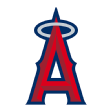
44. Griffin Canning, SP, Los Angeles Angels
Canning is another talented college arm that entered his professional career with injury concerns. He was healthy last season, tossing over 110 innings in his first season with the Angels. Equipped with a smaller frame, he throws in the low 90s with an assortment of secondaries that all show above-average or better promise and decent control that could one day become command. He reached Triple-A in his maiden voyage to the pro game and looks like a lock to make it to Anaheim at some point in the upcoming season.

45. Logan Allen, SP, San Diego Padres
Allen is one of the more polished arms on the list and could probably navigate his way through a major league lineup now. He has two above-average secondary pitches -- slider and changeup -- that work off a low-90s fastball, with good control of all of them. He is a lefty with good size and advancing endurance. Even after a promotion to the hitter-friendly PCL, he maintained effectiveness, although his location was not quite as sharp. Getting out of El Paso will be a good thing for him once the Padres come calling sometime this summer.
Update: Allen's spring ERA looks rough, but save for one bad outing, he has pitched well enough to break camp with the big league club. Very quickly, San Diego has become one of the more exciting teams to watch for 2019.

46. Chris Paddack, SP, San Diego Padres
Paddack is ahead of Allen in terms of talent, but after missing all of 2017, he's just a step behind in terms of development. Stocked with a Texas fastball that can get into the mid-90s, he throws one of the better changeups in the minors, with the feel for manipulation and location. The ability to change eye levels with his offerings has allowed him to get by the lower levels without much of a breaking ball. That said, his curveball needs to jump at least half a grade to be viable at the upper levels. The presence of a true out pitch along with pitchability and a pitcher's park make him a sleeper to make some real progress as soon as this season.
Update: Paddack, with a terrific spring, will likely join Allen when the team heads west next week. The righty has had such a good camp, there were whispers that he could draw the Opening Day assignment. For now, just having a spot in the rotation is good news for anyone looking for low-priced pitching.

47. Kevin Newman, SS, Pittsburgh Pirates
The 19th overall pick in 2015, Newman finally reached the majors last summer after what felt like a longer-than-it-should-have-been stay in the minors. He did not help himself in his brief time with the Pirates, but 100 plate appearances is not a fair assessment of anyone. The 25-year-old will get a chance in earnest to win the shortstop job this spring with Jordy Mercer out of the picture. Newman's value is dependent on contact and speed. When on, he is a potential leadoff type with high contact rates and at least 60-grade speed once aboard. He is better suited to play second base, but that's the Pirates' problem. A shortstop with 25-plus steals and a solid average is the appeal here.

48. Austin Hays, OF, Baltimore Orioles
Hays went from potential Opening Day starter last spring to struggling in Double-A in nearly a blink of an eye. The good news heading into 2019 is that he should be healthy after undergoing ankle surgery in September, and he plays for the Orioles, who lack talent at the highest level. Hays has big-time raw power. He smashed more than 30 home runs in 2017, including one in the majors. He doesn't have a great hit tool and doesn't seem prone to high on-base percentages, but again, these are the 2019 Orioles. Giving Hays the opportunity to mash 20 or more home runs seems like a worthwhile venture for the upcoming season.
Update: Hays had an abysmal 2018 season, a year in which many expected him to play mostly in Baltimore. He rebounded this spring with an incredible 1.277 OPS and five home runs, but he'll start the season in Norfolk with an eye on a return to the majors soon.

49. Billy McKinney, OF, Toronto Blue Jays
McKinney, a former first-round pick (2013) in his fourth organization, looks to be in line for his first chance at significant playing time in 2019. The 24-year-old does not do one thing particularly well, but he can hit a little, has some pop and has the inside track on playing time as the strong side of a platoon in left field. It's possible he could hit 20-plus home runs in 500 plate appearances in 2019, with the chance to drive in some runs in a lineup that has offensive potential.
Update: McKinney's left-handed bat likely landed him a spot on the roster over the right-handed Anthony Alford. He will get a chance to prove himself as a top-of-the-lineup option against right-handers early on.
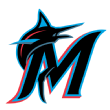
50. Victor Victor Mesa, OF, Miami Marlins
Admittedly this is a bit of a long shot, since Mesa has yet to play in a professional game. That said, the Marlins invested seven figures for the 22-year-old, who was highly successful in Cuba. Mesa once projected to hit for average and power with plus bat speed, but that was about two years ago and he has not seen a significant pitch since. Defensively, he projects as an above-average center fielder with good speed. He could spend all season in Jupiter, or he could break out and make the short drive over to Miami midseason. At number 50, the upside is worth the inclusion on this list.
